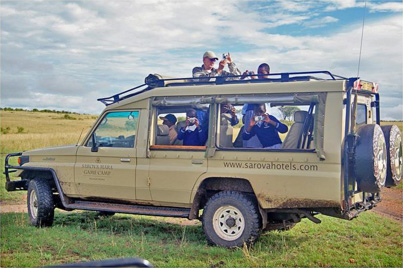Growing up with wildlife was mostly seen as a threat to these kids from the villages surrounding the wildlife reserves. They will one day be the adults who could determine the very future maintenance of this world treasure. While they live next to this sometime predatory wildlife, few African kids had ever experienced a photo safari in which the naturalists get to tell another side to growing up with wildlife. The conservation of this scarce wildlife that tourists from all over the world come to experience in the ultimate “safari” of their lives. There is no inherent guarantee that these reserves will survive. The Kenyan wildlife reserves require a significant portion of the one-third of the land that is habitable with rapidly growing population pressure.
 The biggest surprise of the Kenyan kids’ program has been the overwhelming response that tops off the contribution to wildlife conservation – the instant self-esteem the kids demonstrate as if a light-switch was turned on by their few day “tourist safari” in the well-appointed 4-by vehicles accompanied by tourist camp guides and naturalists. Much criticism of working with native communities in “wildlife conservation” stems from subordinating local social issues to lofty international pressures.
The biggest surprise of the Kenyan kids’ program has been the overwhelming response that tops off the contribution to wildlife conservation – the instant self-esteem the kids demonstrate as if a light-switch was turned on by their few day “tourist safari” in the well-appointed 4-by vehicles accompanied by tourist camp guides and naturalists. Much criticism of working with native communities in “wildlife conservation” stems from subordinating local social issues to lofty international pressures.


Comments are closed.